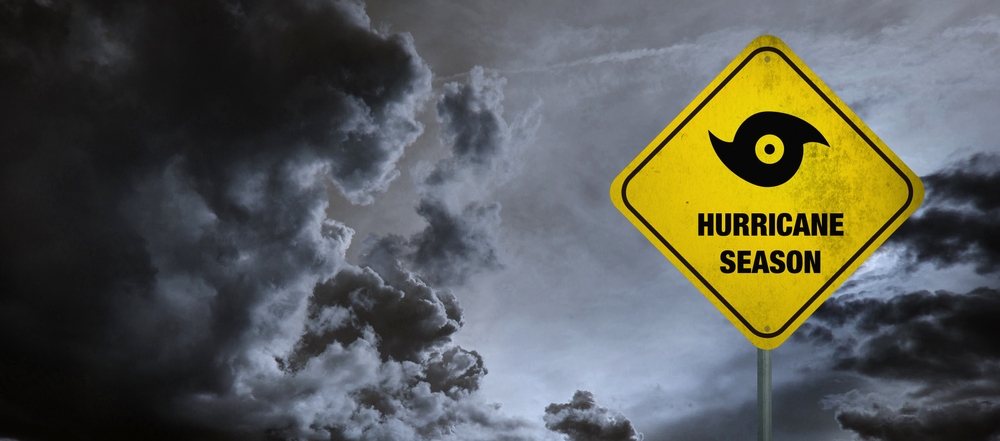The 2025 Atlantic hurricane season is shaping up to be busier than usual, raising the odds of refinery shutdowns, port closures, and sudden price spikes that can derail specialty-oil supply chains. This guide breaks down the latest storm outlook, explains how even distant hurricanes disrupt procurement, and shows the proactive steps you need to prepare. Questions? Contact us.
The Atlantic hurricane season (June 1 – Nov 30) is back—and forecasters warn that 2025 could keep buyers of white, process, and base oils on their toes.
Below is the latest outlook, why storms hundreds of miles away can still hit your delivered costs, and five fast moves to stay ahead of the weather.
Suzanne Kingsbury, Director of Quality
2025 Outlook at a Glance: Specialty Oil Supply Chain Risk
Forecasters agree this season will likely run hotter than average, with both NOAA and Colorado State University projecting a crowded slate of named storms and hurricanes.
Warm Atlantic waters, neutral El Niño conditions, and lingering marine heat waves combine to keep the odds of refinery-disrupting landfalls high—making it critical for specialty-oil buyers to monitor each advisory and plan ahead.
- NOAA (May 22):
- 13–19 named storms
- 6–10 hurricanes
- 3–5 major (Cat 3+) hurricanes
- 60% chance the season is above normal
“Warmer sea-surface temperatures are probably the major contributor to this [forecast for an above-normal season].” – Ken Graham, National Weather Service Director
- Colorado State University (July 9):
- 16 named storms
- 8 hurricanes
- 3 major hurricanes
- Season trimmed slightly because of early-summer Caribbean wind shear, but still “slightly above normal”
What does that mean for you? More storms aiming at the Gulf and East Coasts = more chances for refinery outages, port shutdowns, and freight chaos.
Why a Storm Can Upend Your Purchase Order
Even a distant hurricane can ripple through the specialty-oil market. Gulf Coast refineries, coastal terminals, and barge routes form a tightly linked system; when any one node shuts down, product and freight bottlenecks cascade inland.
Add in fast-moving price spikes, and a single weather alert can turn into a procurement scramble if you’re not prepared.
- Gulf-heavy refining footprint: Refineries from Corpus Christi to New Orleans make up >55% of total U.S. capacity—a direct hit or precautionary shutdown squeezes feed-stocks for specialty-oil production.
- Waterborne chokepoints: Florida, with no in-state refineries, relies on barge deliveries through Port Tampa Bay; one closure can ripple across the Southeast fuel-and-base-oil market for weeks.
- Terminal shutdown chain reaction: During 2024’s Hurricane Milton, Kinder Morgan, CITGO, and other operators shut Tampa terminals and pipelines—fuel (and base-oil) trucks couldn’t load until winds dropped below 35 mph.
- Price volatility: When refineries throttle back, tightening supply pushes up spot base-oil prices and freight premiums—often within hours.
5 Moves to Hurricane-Proof Your Specialty-Oil Supply
Proactive supply-chain tweaks made now—before the tropics heat up—can slash both risk and stress later.
The following five tactics focus on spreading out sourcing, hardening logistics, and locking in technical flexibility so your production line keeps running smoothly, no matter what the forecast track shows.
- Diversify where you lift product. Ask suppliers for inventory staged in both Gulf and inland/Atlantic terminals.
- Top up tanks early. Build buffer inventory before mid-August, when storm frequency peaks.
- Pre-book freight with hurricane clauses. Securing carriers now guarantees first-call service when trucks and barges are scarce.
- Review emergency clauses in your contracts. Tighten delivery-failure provisions so you’re not left holding the bag if a supplier goes dark.
- Approve alternate grades in advance. Having lab-certified substitutes (e.g., a sister viscosity) keeps your line running if a niche fluid goes short.
How Renkert Oil Keeps Your Specialty Oil Supply Chain Running—Rain or Shine
Renkert Oil turns storm preparedness into a competitive advantage for our customers.
From multi-region terminal storage to rapid mode-switch logistics and vendor-managed inventory, we build redundancy into every link of your supply chain—backed by technical experts who can pivot products or paperwork at a moment’s notice.
- 7 terminals across the U.S. from West to East, Midwest to the Gulf, means no single storm can stop shipments.
- Seasonal inventory build. We start hurricane contingency planning each spring and boost on-hand stock well before forecasts turn urgent.
- Agile logistics. If a port closes, product transport pivots to rail or ISO tank within hours—not days.
- Rapid technical support. Need an alternate process or USP grade? Certificates of Analysis and sample drums on select products ship out overnight. The Renkert technical team will recommend drop-in alternatives for your test approval.
Ready for a Specialty Oil Supply Partner That Plans 3 Steps Ahead?
Hurricanes may be unpredictable, but your specialty-oil supply doesn’t have to be. Renkert Oil turns storm-season uncertainty into a competitive edge with multi-terminal stocking, nimble logistics, and hands-on technical expertise.
Lock in a hurricane-hardened supply strategy today. Contact us to secure your next shipment—before the next tropical wave rolls off the West African coast, not after.
Stay filled, stay compliant, stay profitable—whatever the weather, with Renkert Oil.

